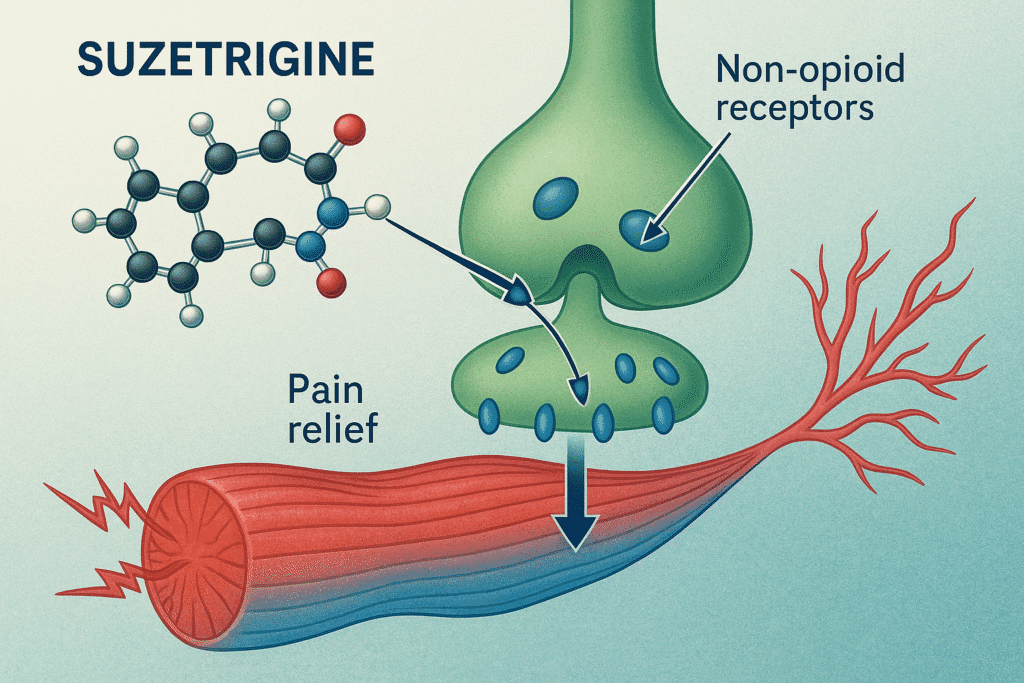The opioid crisis threw a dark shadow on modern medicine, with addiction, overdose, and dependency taking millions of lives worldwide. But 2025 is shaping up to be a revolutionary year. Thanks to cutting-edge science and technology, the face of pain treatment is changing—toward powerful, non-opioid medications that bring relief without risk.
Why Avoid Opioids?
Opioids like oxycodone, morphine, and fentanyl have been the go-to for acute and chronic pain for decades. As effective as they are, the side effects include sedation, constipation, respiratory depression, and most notably, a highly likelihood of addiction.
Greater consciousness of those hazards has engendered increasing demand for alternatives. Clinicians, researchers, and biotech firms now more and more target treatments that:
•Are extremely potent in pain alleviation
•Avoid central nervous system addiction mechanisms
• Trevvyx (vofespib)
• Enhance long-term recovery and quality of life
Breakthrough of 2025: Suzetrigine (VX-548)
During January 2025, the U.S. FDA approved Suzetrigine (VX-548), the first truly novel acute pain drug in over 20 years. Suzetrigine, which was developed by Vertex Pharmaceuticals, selectively targets the NaV1.8 sodium channel—a major pain signal pathway in peripheral nerves.
Why it matters:
• Non-opioid, non-addicting
• Pain relief quickly for postoperative and trauma pain
• No respiratory depression, sedation, or constipation
• No withdrawal symptoms
Early tests revealed that Suzetrigine was as effective as hydrocodone in relieving pain without the abuse risk. Same level of satisfaction and faster cognitive recovery was achieved by patients who underwent procedures like bunionectomy and abdominoplasty.
More Pain Solutions Without Opioids in 2025
1. Neuromodulation Devices
Wearable and implantable devices that translate nerve signals into electrical pulses are getting more advanced. Take spinal cord stimulators, transcutaneous electrical nerve stimulation (TENS), and newer closed-loop neuromodulation systems that titrate in real time.
Example: The FDA has recently approved a wearable device that uses pulsed radiofrequency to help relieve nerve pain in patients with arthritis and sciatica.
2. Regenerative Injections
Platelet-Rich Plasma (PRP) and stem cell injections are treating joint, tendon, and musculoskeletal pain by rebuilding damaged tissue instead of simply numbing it.
•\\tIdeal for sports injuries, osteoarthritis, and chronic back pain
•\\tLow side effect risk profile and increasing insurance coverage in 2025
3. Targeted Monoclonal Antibodies
For conditions like fibromyalgia and chronic migraine, drugs such as galcanezumab (Emgality) and erenumab (Aimovig) are widely employed today. They are biologics that are inhibiting pain messengers such as CGRP and offering prolonged relief.
4. Virtual Reality (VR) & Digital Therapeutics
Pain is not just physical—it’s psychological and neurological. FDA-approved digital therapeutics, guided meditation apps, and VR therapy are helping rewired the body’s reaction to pain.
•Especially good for burn patients, pain related to PTSD, and long-term low back pain
•Supported by neuroscience and customized biofeedback
What This Means for Patients
The age of “take a pill” is over. Pain management today is becoming:
•Personalized: Founded on genetics, neuroscience, and lifestyle information
•Preventive: Emphasizing preventing pain before it becomes chronic
•Multimodal: Integrating physical therapy, psychological strategies, non-opioid medications, and technology
Patients and providers alike have more options than ever before to manage pain without compromising long-term health.
Last Word
As we mark the end of the opioid era, 2025 will look back on as the year pain care truly turned the corner. New drugs like Suzetrigine, cutting-edge technology, and integrative modalities mean that the future of pain management is not only safer—but smarter.
If you or a loved one is struggling with pain, talk to your medical professional about these new possibilities. Pain relief without the danger is no longer just a dream—it’s a possibility.




